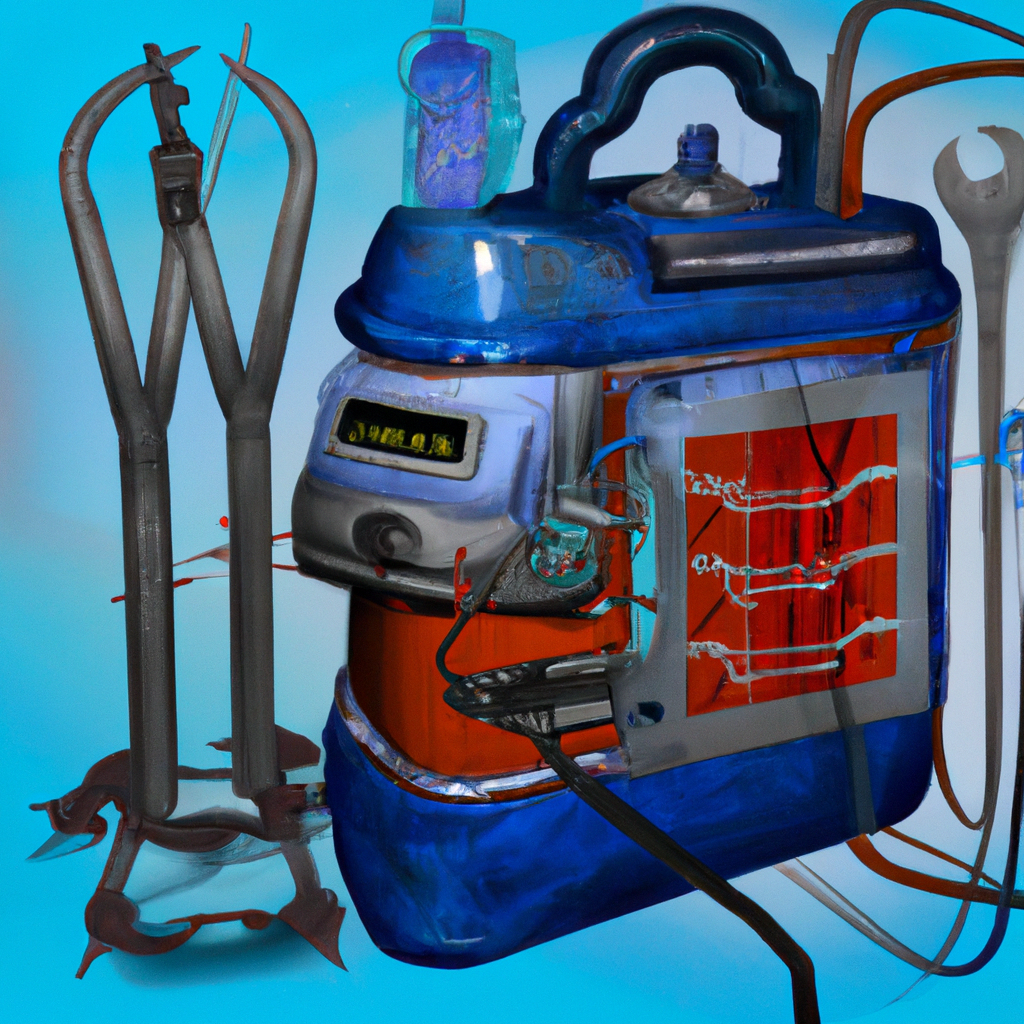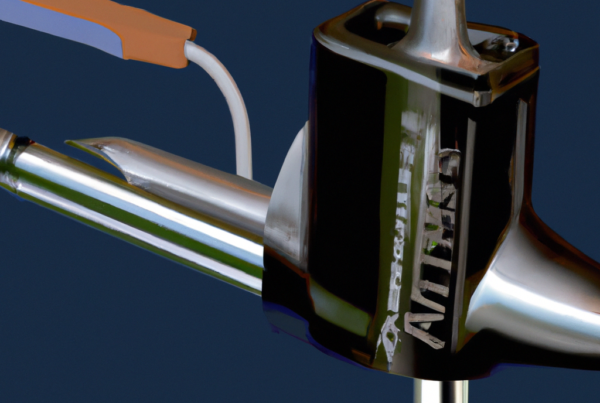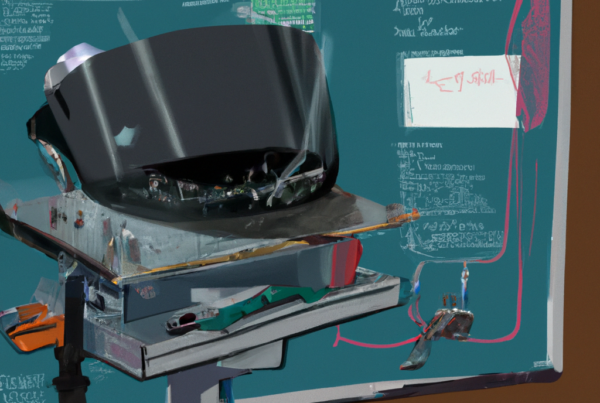Are you looking for a reliable, safe and efficient way to power your welding projects? Generators are the perfect choice for powering a welder, allowing you to take your welding projects on the go. With a generator, you can run your welder in any location – from the job site to your home workshop. This article will guide you through the basics of powering a welder with a generator, including the types of generators to consider, safety precautions, and more. Ready to get started? Let’s dive in!

What type of Generator do I need to run a Welder?
To run a welder, you need a generator that can produce enough power to support the welding equipment. Most welders require an output of around 80 to 120 amps, so you will need a generator with a minimum rating of at least 8,000 watts.
When selecting a generator for welding, there are several factors to consider:
- Power Output: The generator should have an output of at least 8,000 watts.
- Fuel Source: Most generators for welding use gasoline, diesel, natural gas, or propane as their fuel source.
- Noise Level: Some welders require a very quiet generator, so make sure to check for how loud the generator is before purchasing.
- Portability: If you need to move the generator around, make sure to get one that is light enough to be moved easily.
It is also important to note that some welders require a three-phase generator to work properly, so make sure to check the specifications of the welder before buying a generator.
How much Power does a Welder require?
Welders require a large amount of power to run, often more than is available from a typical home power source. The amount of power required will vary depending on the type of welder and the size of the job. Generally speaking, most welders run on 240 volts and require between 20-50 amps of power. This equates to up to 12,000 watts of power.
The amount of power needed to run a welder will also depend on the type of welding being done. Stick welding requires less power than TIG welding, for example. In addition, the size of the job and the size of the workpiece will also have an effect on the amount of power needed.
When considering whether a welder can be run with a generator, it is important to take into account the wattage requirements of the welder. Generators vary in size and capacity, so it is important to make sure the generator can handle the wattage of the welder. Generally speaking, a generator should be able to supply between 80-120 amps of power.
To ensure the welder is running safely and efficiently, it is important to use the correct wiring and make sure the generator is properly grounded. If the generator is not properly grounded, it can cause a serious safety hazard. Additionally, it is important to run the generator at the correct voltage and amperage to avoid damaging the welder.
Overall, welders require a large amount of power to run. It is important to make sure the generator being used to power the welder can provide the appropriate amount of power and is properly grounded to avoid any safety hazards.
Are there any Safety Considerations when using a Generator to run a Welder?
Yes, there are a few safety considerations to keep in mind when using a generator to run a welder. Before attempting to operate a welder with a generator, make sure the generator is capable of providing the correct output voltage and amperage for the welder. Additionally, ensure that the generator is sized appropriately for the welder. Depending on the size of the welder, the generator may need to be rated for 8-20 kW or more. Also, be sure to ensure that the generator is properly grounded. Furthermore, it is important to keep the generator away from any combustible materials. Lastly, make sure the welder is connected to the generator with the appropriate gauge of cord and connectors.
What type of Fuel is used to Power a Generator for Welding?
When it comes to powering a generator for welding, there are several different types of fuel that can be used. The most common type of fuel used to power a generator for welding is diesel. Diesel is a reliable and cost-effective option and is the best choice for powering a welding generator.
Other fuel options include natural gas, gasoline, and propane. Natural gas is an effective option but is less common due to its cost. Gasoline is a more widely used option, but it is not as reliable or cost-effective as diesel. Propane is an even less common option, but it is more cost-effective than diesel and natural gas.
The type of fuel you use for a welding generator depends on your individual needs and preferences. Here are some of the advantages and disadvantages of each fuel type:
- Diesel – relatively inexpensive, reliable, and widely available.
- Natural gas – more expensive than diesel, but still reliable and widely available.
- Gasoline – less reliable and more expensive than diesel, but widely available.
- Propane – less reliable and more expensive than diesel, but more cost-effective than natural gas.
In conclusion, diesel is the most common type of fuel used to power a generator for welding. However, depending on your individual needs and preferences, you may choose to use natural gas, gasoline, or propane.
Is there a Difference between a Generator used for Welding and a Generator used for Other Purposes?
Yes, there is a difference between a generator used for welding and a generator used for other purposes. A generator used for welding requires more power than other machines and appliances, so it is important to check the specifications of the generator before using it for welding.
Here are some differences between a generator used for welding and a generator used for other purposes:
- The power output of the generator for welding is higher than other generators.
- A welding generator is designed to handle higher voltage and amperage requirements than other generators.
- The insulation of a welding generator is designed to protect it from the higher temperatures created when welding.
- A welding generator needs to have larger fuel tanks to power the welding process over a longer period of time.
- The noise level of a welding generator is higher than other generators.
So, the answer to the question, “Can I run a welder with a generator?” is yes, but it is important to check the specifications of the generator to make sure it is suitable for welding.
What type of Extension Cord do I need to Connect the Generator to the Welder?
In order to connect a generator to a welder, you will need a specialized extension cord that is rated for the power output of the generator. It is important to choose the correct extension cord to ensure the safety of the appliance and the generator. Here are some things to consider when selecting the proper extension cord:
- Amperage rating – The amperage rating of the extension cord should match the amperage rating of the generator. It is important to check the amperage rating of both the generator and the extension cord to ensure that they are rated for the same amount of power.
- Length – The length of the extension cord should be long enough to reach from the generator to the welder. Too short of an extension cord may not provide enough power to the welder.
- Gauge – The gauge of the extension cord should be large enough to handle the amount of power that the generator is producing. An extension cord with a gauge of 8 or 10 should be sufficient for most generators.
It is important to note that the generator should never be connected to a regular household extension cord as these are not designed to handle the amount of power that the generator produces. The extension cord should also be rated for outdoor use to prevent any potential hazards.
Can I use a Generator to run a Stick Welder?
Can I use a Generator to run a Stick Welder? It is possible to run a stick welder with a generator, however, it is important to consider the following:
- The generator must have the necessary power output to run a welder. Stick welders generally require a generator with a minimum of 7,500 watts of power output.
- Stick welding requires long periods of high-power output. Generators should be able to handle a sustained load of at least 80% for a long period of time.
- The generator must have the necessary voltage output for your particular welder. Stick welders generally require an output of either 120 volts or 240 volts.
It is important to read the operating manual for your specific stick welder and generator before attempting to use them together. This will ensure that the generator is capable of supplying enough power for your welder and that it is wired appropriately for the correct voltage.
What are the Advantages of using a Generator to Power a Welder?
Generators are a great way to power a welder as they offer several advantages. Here are just a few of them:
- Versatility – Generators are designed to be highly versatile, allowing them to power a variety of tools and equipment. This means that a single generator can be used to power a welder, as well as other devices such as lights, pumps, and more.
- Portability – Generators are designed to be small and lightweight, making them easy to move around. This makes them perfect for powering welders in remote locations, or in areas where there is limited access to other power sources.
- Safety – Generators are designed to be safe to use, and are much less likely to cause electric shocks or fires than other power sources. This makes them especially suitable for powering welders, which use high amounts of electricity.
- Reliability – Generators are designed to be reliable and able to withstand the rigors of regular use. This ensures that they can provide a consistent and reliable power source for a welder, even in harsh conditions.
Overall, generators are an ideal way to power a welder. They offer a variety of advantages, including portability, safety, and reliability, making them a great choice for powering welders in a variety of situations.
Is there an Alternative to using a Generator to Power a Welder?
Yes, there are alternatives to using a generator to power a welder. Depending on the type of welder being used, other sources of electricity are available.
For small welders, such as stick welders, a dedicated power outlet may be used, such as a 120-volt outlet. Larger welders, such as MIG welders, may require a dedicated 220-volt outlet. This type of outlet is usually provided by a local power company.
For those without access to a dedicated power outlet, another option is to use a portable power source, such as a battery. This is especially useful when welding outdoors or in remote areas. The battery can provide the necessary power to run the welder, without the need for a generator.
Finally, a solar-powered welder may be used. This type of welder is powered by the sun and does not require a generator or other power source. Solar-powered welders are becoming increasingly popular due to their convenience and cost-effectiveness.
What is the most Common Problem when using a Generator to run a Welder?
The most common problem when using a generator to run a welder is the power output. Generators are usually not designed to provide the high levels of power needed to operate a welder. Even if the generator is rated to produce the necessary amount of power, it may not be able to maintain a consistent output. This can cause the welder to either under-perform or over-heat. Additionally, the generator’s fuel supply may not be able to keep up with the welder’s power demands.
In order to successfully run a welder with a generator, the following should be taken into consideration:
- The generator must be rated for the same voltage as that of the welder.
- The generator must be rated to produce the necessary power output.
- The generator must be able to maintain a consistent power output.
- The generator must have a fuel supply that is capable of sustaining the power output.
In some cases, an inverter generator may be used to run a welder. However, it is important to note that inverter generators may not be able to produce the necessary power output or maintain a consistent output. It is also important to consider the size and weight of the generator, as a larger unit may be needed in order to power a welder.



